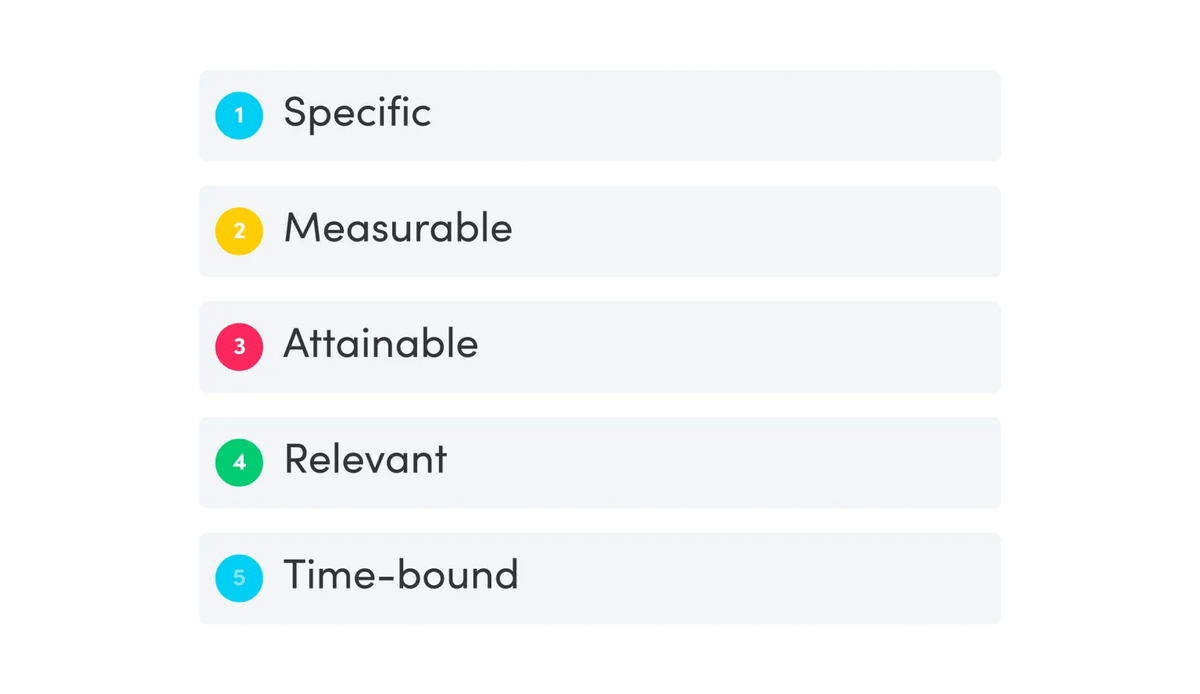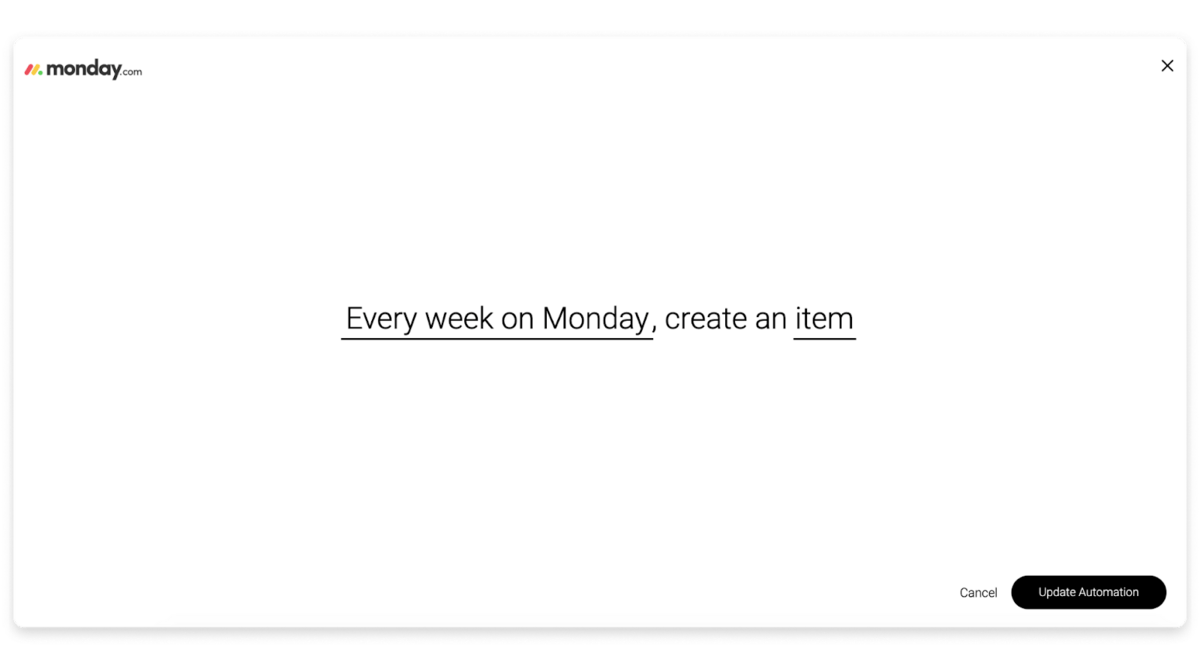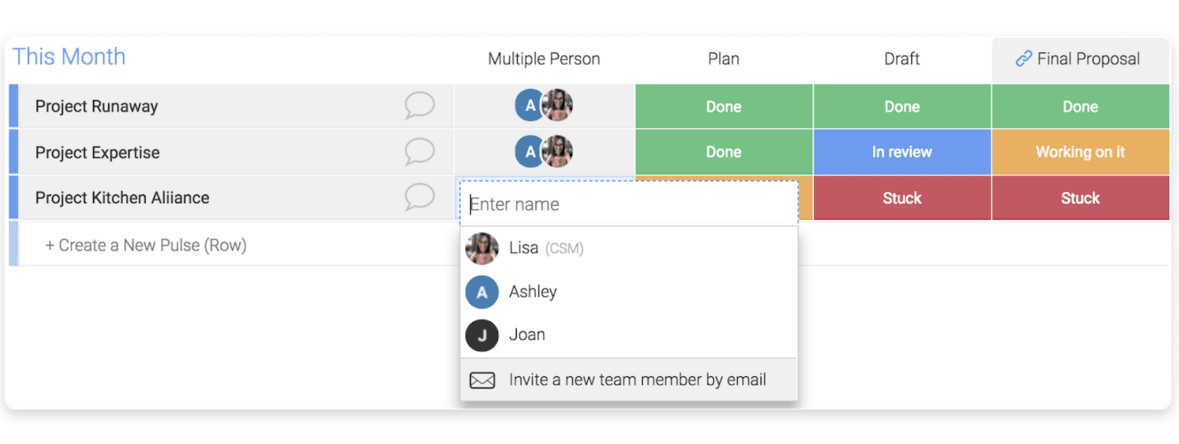If you’re reading this article, you’re probably asking yourself the following question:
How do you increase productivity?
We wish we could give you a simple answer. Unfortunately, there isn’t one way to improve productivity.
The path to increasing productivity varies from business to business, depending on the issues you’re facing.
But if you’re not sure where to start, you’ve come to the right place.
In this article, we’re going to look at 6 simple ways you can see higher productivity — no matter what your issues are.
We’ll also explore why improving productivity is important and how to identify low productivity in your team.
Why is it important to improve productivity?
Productivity is important for business growth and development.
Why?
Because the more productive you are, the higher your output will be. As a result, you have a higher chance of increasing your sales and growing your business.
Let’s use an example.
Imagine you have a bakery.
You have 4 hours each day to make as many doughnuts as possible. During that time, you make 1000 doughnuts. The bakery across the street makes 750 in the same timeframe.
Out of the 2 bakeries, you’ve been more productive. As a result, you have more doughnuts to sell than your competitor. This gives you a higher chance of making more sales and helping your business to grow.
How to identify low productivity
Several factors can cause low productivity, but there are a few common signs to look out for:
- You’re not hitting company goals: If your team isn’t reaching company goals and things are falling behind, this could be a result of low productivity. It could also be that your goals are too ambitious, so it’s up to you to identify where the problem stems from.
- Poor quality of work: If a worker feels pressured to meet an unrealistic quota, the quality of their work could suffer. As a result, you spend time bringing the quality up to scratch and asking them to redo their work. As you can imagine, this isn’t good for productivity.
- Team members seem distracted: More than 70% of employees spend time during work hours worrying about something happening in their life. Of those, 41% said it made them less productive.

If any of your team seem like they have something on their mind, talk to them. You might alleviate some of their concerns and clear their mind to focus on the work at hand.
6 simple ways to increase employee productivity
If you’ve recognized low productivity in your team, you might be wondering how you can turn things around.
Fortunately for you, we’ve outlined 6 productivity tips.
But remember, this isn’t the absolute guide to increasing productivity levels.
It’s a good starting point. But to find out how to increase your team’s productivity, you need to figure out what the problem is first.
That said, let’s take a look at 6 easy ways to encourage productivity improvement.
1. Increase employee engagement
Research shows that high employee engagement has a positive impact on productivity.
It provides employees with a personal connection to the company, giving them the motivation to work hard, be productive, and deliver results.
So how can you increase employee engagement?
Here are a few tips:
- Schedule catch-ups and one-on-one meetings. Spend time catching up with your team on a one-to-one basis. This shows you care about their work and that you want to help them progress.
- Provide regular feedback. Schedule time in your calendar to provide feedback on their performance. Whether that’s an entire performance review or simply offering your thoughts on important tasks.
- Encourage collaboration. Helping your team collaborate is a great way to keep everyone engaged by working as a team. You might want to think about using a work management system to keep everyone on the same page.
If you want to find out more about whether your team is engaged, take a look at monday.com’s employee engagement survey template.
2. Avoid unnecessary meetings
A study from Owl Labs shows that employees lose more than an hour of workplace productivity every day due to meetings:

It might not sound like a lot, but it adds up. In fact, the average employee is apparently only productive for 2 hours and 53 minutes of the day — so you need all the time you can get.
So what’s the solution?
The first place to start is by reviewing the meetings you currently have. To identify an unnecessary meeting, take a look in your calendar and ask yourself the following questions:
- Does everyone invited to this meeting need to be there?
- Can you shorten the length of the meeting?
- Is this meeting necessary, or would an email suffice?
By reviewing the time, length, and content of your meetings, you can help your team become more productive.
3. Set realistic goals
There’s a fine line between creating goals that challenge your team and creating completely unrealistic goals.
For employee morale to stay high, you need to tread carefully.
So how do you create the right balance?
First things first, make sure your goal setting follows the SMART framework.

With SMART goals in place, you’ll provide clarity about what you want to achieve, how you plan to do it, and when it’s due.
As a result, you set realistic goals and milestones for your team to work towards. This keeps them motivated and engaged, which we already know helps overall productivity.
4. Encourage regular breaks
No one can work at 100% all of the time. It’s impossible.
That’s where work breaks can help.
Studies show that taking breaks during work hours contributes to higher energy levels. Without these breaks, productivity can suffer, and so can mental health.
But how can you encourage regular breaks, especially if your team does remote work?
We’d suggest time blocking.

Time blocking is a form of scheduling that helps boost productivity through focused work done in specific blocks of time.
And it doesn’t just have to be for work tasks.
Scheduling breaks during work hours allows your team to plan their downtime and stick to it. They don’t have to feel guilty about needing a break because it’s part of the daily plan.
As a result, employees come back from their break feeling energized, refreshed, and motivated to be productive.
5. Keep your team accountable
First things first, what is workplace accountability?
Put simply, it’s when employees are responsible for their actions and performance.
Holding your team accountable for their work provides them with the motivation they need to get things done. In other words, it encourages them to use their time productively.
So how can you hold your team accountable?
Let’s take a look:
- Be clear on what you expect: it’s no use holding people accountable for their work if they don’t know what they’re accountable for. Be clear about what you expect them to do.
- Ask for updates on progress: checking in on progress reminds your team that they need to be on top of what they’re doing.
- Encourage team members to work together: if team members are working together, they have a responsibility to each other. This creates a sense of accountability not only to themselves but to their colleagues as well.
- Using work management software: implementing a team-wide platform provides everyone with transparency of the entire project. Everyone can see what they’re responsible for, what their teammates are working on, and how the project is progressing.
6. Manage time efficiently
It’s not uncommon for employees to feel stressed from time to time.
But when 41% of employees say feeling stressed makes them less productive, you might want to think about how you can relieve some of that pressure.
So what can you do to reduce stress for your employees?
Effective time management can certainly help.
Time management is a tough nut to crack. But when it’s done well, it relieves stress and allows employees to focus on their work.If you’re thinking about how you can help employees manage their time better, why not consider using a work management platform like monday.com?
With our software, you can easily plan your entire schedule and prioritize tasks. This makes it much easier for employees to keep on top of their workload and be as productive as possible.

Using a monday.com to improve productivity
As a Work OS, monday.com helps teams be productive. You can streamline your processes, manage your workflow, and keep track of every project — all from one location.
Not to mention, we’re big on customizing. You can customize all of our templates to your liking, allowing you and your team to be as productive as possible.
Let’s take a look at some of these features in more detail.
1. Streamline your processes
Whether you’re automating your processes or integrating third-party tools into your workflow, monday.com allows you to easily streamline your processes.
As a result, you can spend more time being productive, and less time worrying about the efficiency of your workflow.

2. Effective communication
We know how important it is for teams to communicate. That’s why our platform allows users to easily communicate and collaborate on all their projects.
You can add comments, tag users, and even provide team-wide updates about a specific task.
And by collaborating efficiently, teams can be more productive with their time.

3. Track and manage your time
Time tracking allows you to see how your team is spending their time, and whether they’re as productive as they could be.
With monday.com, you can easily track time spent on specific tasks and projects.
Using this information, you can help your team manage their time efficiently and be as productive as possible.

Let’s get things moving
As we’ve already mentioned, the path to increased productivity varies from business to business.
Although we’ve given you a solid starting point and outlined some small changes you can make, you need to do a productivity evaluation to find out exactly what actions you need to take.
And using a work management system like monday.com is the perfect place to start.
Our platform is for teams like yours that want to improve their workflow and help their teams be as productive as possible.
Why not sign up for monday.com to see what you think? We’d recommend starting with our single project template to get things off the ground.

